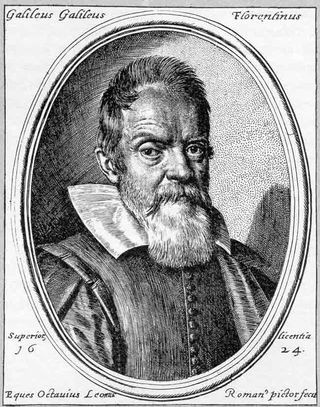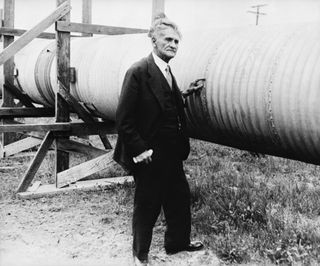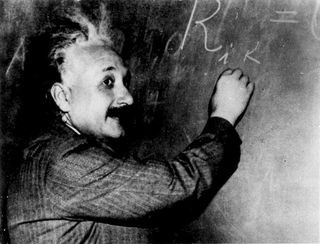“How Fast Does Light Travel In Metres Per Second?” is a question that unveils one of the universe’s most fundamental constants. At TRAVELS.EDU.VN, we explore this concept and its implications, offering insights into the world of physics and travel possibilities it inspires. Uncover light’s speed, measurement, and its impact on space exploration, physics theory, and redefine our comprehension of the cosmos, space travel, and the universal speed limit.
1. Understanding the Speed of Light: A Cosmic Constant
The speed of light in a vacuum is precisely 299,792,458 meters per second (approximately 983,571,056 feet per second). This universal constant, often denoted as “c” in equations, is roughly 186,282 miles per second. It serves as a fundamental cornerstone of modern physics, impacting our understanding of the universe in profound ways.
 Abstract, futuristic image of blue light streaks radiating outward, giving the impression of rapid movement or traveling at high speed, inspired by the concept of faster-than-light travel
Abstract, futuristic image of blue light streaks radiating outward, giving the impression of rapid movement or traveling at high speed, inspired by the concept of faster-than-light travel
1.1. Einstein’s Theory of Special Relativity
Albert Einstein’s theory of special relativity, a bedrock of modern physics, establishes that nothing in the universe can surpass the speed of light. As matter approaches this speed, its mass increases infinitely. This effectively makes the speed of light a universal speed limit. This concept has transformed our understanding of space and time and inspires the development of new propulsion technologies.
1.2. Defining International Standard Measurements
The speed of light’s immutability is so reliable that the U.S. National Institute of Standards and Technology (NIST) employs it to define international standard measurements, including the meter (and subsequently, the mile, foot, and inch). Through sophisticated equations, it also contributes to defining the kilogram and the temperature unit Kelvin, demonstrating its fundamental role in metrology.
2. The Light-Year: Measuring Cosmic Distances
A light-year is the distance that light journeys in one year, equating to about 6 trillion miles (10 trillion kilometers). This unit is pivotal for astronomers and physicists in measuring the vast distances across our universe.
2.1. Light-Years in Perspective
- Light takes about 1 second to travel from the moon to our eyes, indicating the moon is roughly 1 light-second away.
- Sunlight reaches us in approximately 8 minutes, placing the sun about 8 light-minutes away.
- Light from Alpha Centauri, the nearest star system, takes about 4.3 years to arrive, making it 4.3 light-years away.
 Abstract, futuristic image of blue light streaks radiating outward, giving the impression of rapid movement or traveling at high speed, inspired by the concept of faster-than-light travel
Abstract, futuristic image of blue light streaks radiating outward, giving the impression of rapid movement or traveling at high speed, inspired by the concept of faster-than-light travel
2.2. Human Travel and Light-Years
Consider the implications of traveling one light-year:
- An airplane flying at 600 mph (965 km/h) would require 1 million years.
- A crewed spacecraft, similar to the Apollo lunar module, would take around 27,000 years, according to BBC Sky at Night Magazine.
2.3. Observing the Distant Universe
Stars and celestial objects beyond our solar system are located between a few light-years to several billion light-years away. Therefore, observing these objects means viewing them as they existed when the light departed. This principle enables astronomers to explore the universe’s history, including its state shortly after the Big Bang, approximately 13.8 billion years ago.
3. Speed of Light: Expert Insights and FAQs
Let’s delve into some frequently asked questions about the speed of light, answered by NASA’s Jet Propulsion Lab staff scientist and exoplanet-hunter, Dr. Rob Zellem.
3.1. What Exceeds the Speed of Light?
Nothing! Light is the ultimate “universal speed limit” at 300,000 kilometers per second (186,000 miles per second), as per Einstein’s theory of relativity.
3.2. Is the Speed of Light Consistent?
Yes, light maintains a constant speed in a vacuum. However, its pace can diminish slightly when traversing through a medium like water (225,000 kilometers per second or 140,000 miles per second) or glass (200,000 kilometers per second or 124,000 miles per second).
3.3. Who First Determined the Speed of Light?
Ole Rømer made one of the initial measurements in 1676 by observing the moons of Jupiter. The speed of light was first measured with high precision in 1879 through the Michelson-Morley Experiment.
3.4. How Do We Ascertain the Speed of Light?
Ole Rømer measured the speed of light by observing eclipses of Jupiter’s moon Io. He noticed that eclipses of Io occurred slightly earlier when Jupiter was closer to Earth, which he attributed to the time it takes for light to travel the longer distance when Jupiter was farther away.
4. Historical Attempts to Measure Light Speed
 Galileo Galilei is credited with discovering the first four moons of Jupiter.
Galileo Galilei is credited with discovering the first four moons of Jupiter.
Throughout history, numerous philosophers and physicists have contemplated the speed of light, from ancient Greeks like Empedocles and Aristotle to Galileo Galilei and Ole Rømer.
4.1. Early Philosophical Debates
In the 5th century BC, Empedocles proposed that light must have a rate of travel, while Aristotle argued that light transmission was instantaneous.
4.2. Galileo’s Experiment
In the mid-1600s, Galileo attempted to measure light speed using lanterns on distant hills but could only conclude that light travels at least 10 times faster than sound.
4.3. Rømer’s Astronomical Observations
In the 1670s, Danish astronomer Ole Rømer, while trying to create a reliable timetable for sailors, observed that the eclipses of Jupiter’s moon Io varied from his calculations. He attributed these variations to the time light takes to travel from Io to Earth, estimating the speed of light at about 124,000 miles per second (200,000 km/s).
4.4. Bradley’s Stellar Aberration
In 1728, English physicist James Bradley based his calculations on the change in the apparent position of stars due to Earth’s movement around the sun. He estimated the speed of light at 185,000 miles per second (301,000 km/s), within approximately 1% of the actual value.
4.5. Fizeau and Foucault’s Terrestrial Experiments
In the mid-1800s, French physicists Hippolyte Fizeau and Leon Foucault independently conducted experiments on Earth. Fizeau used a rotating toothed wheel and a mirror 5 miles away, while Foucault employed a rotating mirror. Both methods produced results within about 1,000 miles per second (1,609 km/s) of the speed of light.
4.6. Michelson’s Pursuit of Accuracy
 Dr. Albert A. Michelson stands next to a large tube supported by wooden beams.
Dr. Albert A. Michelson stands next to a large tube supported by wooden beams.
Albert A. Michelson, a Poland-born scientist who grew up in California, dedicated much of his career to measuring the speed of light with increasing precision.
- 1879 Experiment: Michelson replicated Foucault’s method, increasing the distance between mirrors and using high-quality optics, obtaining a result of 186,355 miles per second (299,910 km/s).
- Later Experiments: Michelson flashed lights between mountain tops and, just before his death in 1931, built a mile-long depressurized tube to simulate a vacuum, achieving a measurement very close to today’s accepted value.
Michelson’s experiments also aimed to understand the nature of light, leading to the famous Michelson-Morley experiment, which sought to detect the luminiferous aether. Despite failing to detect the aether, this experiment revolutionized physics by demonstrating that light can travel through a vacuum.
5. Einstein, Special Relativity, and Light’s Constant Speed
Einstein’s theory of special relativity revolutionized our understanding of energy, matter, and the speed of light with the equation E = mc^2. This equation shows the relationship between mass and energy, demonstrating that small amounts of mass contain immense energy.
 Albert Einstein writing on a blackboard.
Albert Einstein writing on a blackboard.
5.1. Implications of E = mc^2
- The speed of light serves as a conversion factor, determining the energy within matter.
- Even small amounts of mass equate to vast quantities of energy because the speed of light is such a large number.
5.2. Einstein’s Postulates
Einstein asserted that light moves through a vacuum at a constant speed, irrespective of the observer’s motion. This concept requires the speed of light to be an immutable constant for the universe to be accurately described.
5.3. Consequences for Objects with Mass
Objects with mass cannot reach the speed of light because their mass would become infinite, requiring infinite energy to move them. Thus, the speed of light stands as the universe’s ultimate speed limit.
6. Phenomena Faster Than Light?
Although the speed of light is often considered the universe’s speed limit, there are instances where the universe appears to expand faster.
6.1. Expansion of the Universe
The universe expands at a rate of a little more than 42 miles (68 kilometers) per second for each megaparsec of distance from the observer. A megaparsec equals 3.26 million light-years.
6.2. General Relativity and Distant Galaxies
Einstein’s theory of general relativity allows for different behaviors when examining phenomena at large scales. While special relativity sets a speed limit within the universe, general relativity suggests that distant galaxies can recede at any speed without violating these constraints.
7. Does Light Ever Decelerate?
Light travels at an absolute speed in a vacuum, but its speed can be reduced when passing through materials. The refractive index quantifies the extent to which a material slows down light.
 A sparkling diamond amongst dark coal-like rock.
A sparkling diamond amongst dark coal-like rock.
7.1. Refractive Index Examples
- In Earth’s atmosphere, light slows down by only three ten-thousandths of its speed in a vacuum.
- In diamond, light slows to less than half its typical speed, though it still travels at over 277 million mph (almost 124,000 km/s).
7.2. Trapping and Stopping Light
Light can be trapped and even stopped inside ultra-cold clouds of atoms. Researchers have also explored ways to halt light at “exceptional points,” where two separate light emissions intersect and merge. Additionally, scientists have slowed down single photons moving through a vacuum.
8. Faster-Than-Light Travel: A Science Fiction Dream?
Science fiction often embraces the concept of “warp speed” to enable interstellar travel. While faster-than-light travel remains theoretical, it continues to inspire both sci-fi enthusiasts and physicists.
8.1. Theoretical Possibilities
To achieve faster-than-light travel, we would need to move the space around us rather than moving ourselves. One proposed idea involves a spaceship that could fold a space-time bubble around itself.
8.2. Implications for Interstellar Travel
Without faster-than-light travel, interstellar journeys would be impractical. For example, reaching the next star system would take hundreds of thousands of years using current rocket technology.
8.3. The Future of Exploration
The pursuit of faster-than-light travel remains a compelling goal for future physicists, potentially enabling humanity to explore the farthest reaches of the universe.
9. Napa Valley: A Different Kind of Speed & Light
While we ponder the cosmic implications of light speed, TRAVELS.EDU.VN invites you to consider a different kind of light and speed – the golden light of the sun over the rolling vineyards of Napa Valley, and the exhilarating speed of discovery as you explore its world-renowned wineries and breathtaking landscapes.
9.1. Experience the Beauty of Napa Valley
Imagine yourself gliding through Napa Valley in a private chauffeured car, the California sun warming your skin as you anticipate the first sip of a perfectly aged Cabernet Sauvignon. This is the experience TRAVELS.EDU.VN crafts for you.
9.2. Curated Napa Valley Tours
Our expertly curated tours offer more than just wine tasting; they provide an immersive journey into the heart of Napa’s rich culture, culinary delights, and stunning natural beauty. From intimate boutique wineries to grand estates, we unlock exclusive experiences tailored to your discerning tastes.
9.3. Unmatched Convenience and Luxury
Forget the stress of planning and logistics. TRAVELS.EDU.VN handles every detail, from luxury transportation and accommodation to reservations at the most sought-after restaurants and wineries. We ensure a seamless and unforgettable Napa Valley escape.
10. Planning Your Napa Valley Escape with TRAVELS.EDU.VN
Ready to trade the theoretical for the tangible? Let TRAVELS.EDU.VN transform your travel dreams into reality.
10.1. Personalized Itineraries
We understand that every traveler is unique. That’s why we create personalized itineraries designed to match your specific interests, budget, and schedule. Whether you’re a seasoned wine connoisseur or a first-time visitor, we have the perfect Napa Valley experience for you.
10.2. Exclusive Access
Our established relationships with Napa Valley’s leading wineries, hotels, and restaurants give you access to exclusive experiences unavailable to the general public. Enjoy private tastings with winemakers, behind-the-scenes tours of vineyards, and priority seating at acclaimed restaurants.
10.3. Seamless Booking Process
Booking your Napa Valley tour with TRAVELS.EDU.VN is simple and stress-free. Our expert travel consultants are available to answer your questions, provide personalized recommendations, and handle all the details of your trip.
10.4. Experience the TRAVELS.EDU.VN Difference
- Luxury and Comfort: Travel in style with our premium transportation and accommodations.
- Expert Guidance: Benefit from the knowledge and experience of our local travel experts.
- Unforgettable Memories: Create lasting memories with our curated and exclusive experiences.
FAQ: Frequently Asked Questions About Light Speed and Travel
Q1: How does the speed of light affect our daily lives?
A1: While we don’t directly experience the speed of light in our daily routines, it’s integral to technologies like GPS, telecommunications, and medical imaging.
Q2: Can humans ever travel at the speed of light?
A2: According to Einstein’s theory of special relativity, it’s impossible for objects with mass to reach the speed of light because it would require infinite energy.
Q3: What is the significance of the speed of light in astronomy?
A3: The speed of light is crucial for measuring distances in the universe and understanding the timeline of cosmic events, allowing astronomers to observe objects as they were in the past.
Q4: Does the medium through which light travels affect its speed?
A4: Yes, light travels slower in materials like water or glass compared to a vacuum, due to interactions with particles in the medium.
Q5: How was the speed of light first measured?
A5: Ole Rømer was one of the first to measure the speed of light by observing variations in the eclipses of Jupiter’s moon Io.
Q6: What role does the speed of light play in Einstein’s theories?
A6: The speed of light is a fundamental constant in Einstein’s theories of special and general relativity, linking energy, mass, space, and time.
Q7: Are there any potential applications of faster-than-light travel?
A7: Faster-than-light travel could revolutionize space exploration, allowing humans to reach distant star systems within reasonable timeframes, but it remains theoretical.
Q8: How does the expansion of the universe relate to the speed of light?
A8: The universe’s expansion can exceed the speed of light at very large distances, but this doesn’t violate special relativity because it applies to the expansion of space itself, not the movement of objects within space.
Q9: What are the challenges in measuring the speed of light?
A9: Accurate measurements require precise instruments and accounting for various factors, such as the medium through which light travels and the motion of the observer.
Q10: How can I learn more about the speed of light and its implications?
A10: You can explore resources from NASA, NIST, scientific journals, and educational websites, or consider a trip to Napa Valley with TRAVELS.EDU.VN for a tangible escape.
Ready for Your Napa Valley Adventure?
Don’t just ponder the mysteries of the universe, experience the beauty and wonder of Napa Valley. Contact TRAVELS.EDU.VN today to start planning your unforgettable getaway.
Address: 123 Main St, Napa, CA 94559, United States
WhatsApp: +1 (707) 257-5400
Website: TRAVELS.EDU.VN
Let travels.edu.vn be your guide to the ultimate Napa Valley experience, where every moment is crafted with luxury, expertise, and unforgettable memories. Discover the allure of Napa’s light and the thrill of exploring its enchanting vineyards. Your adventure awaits!